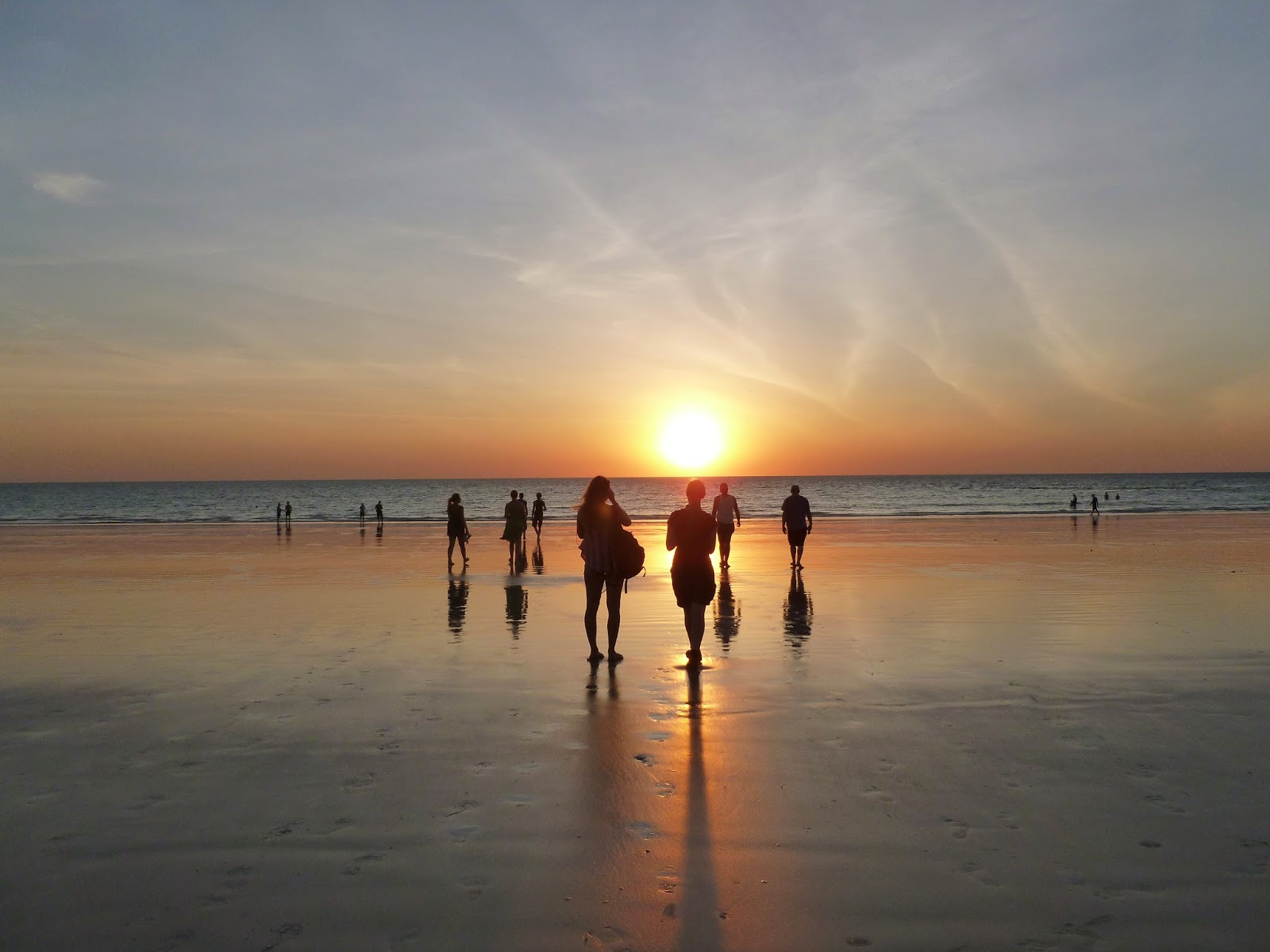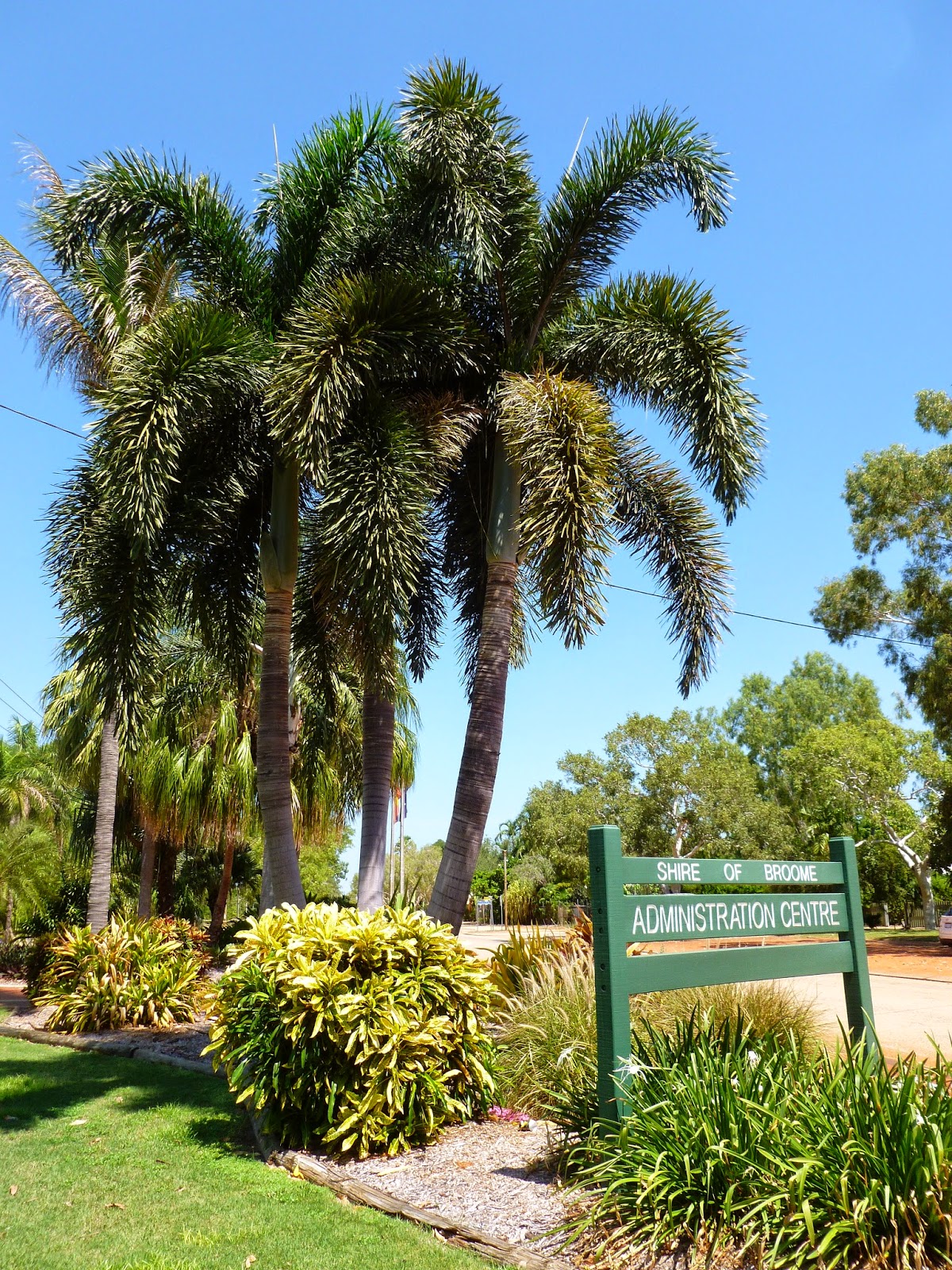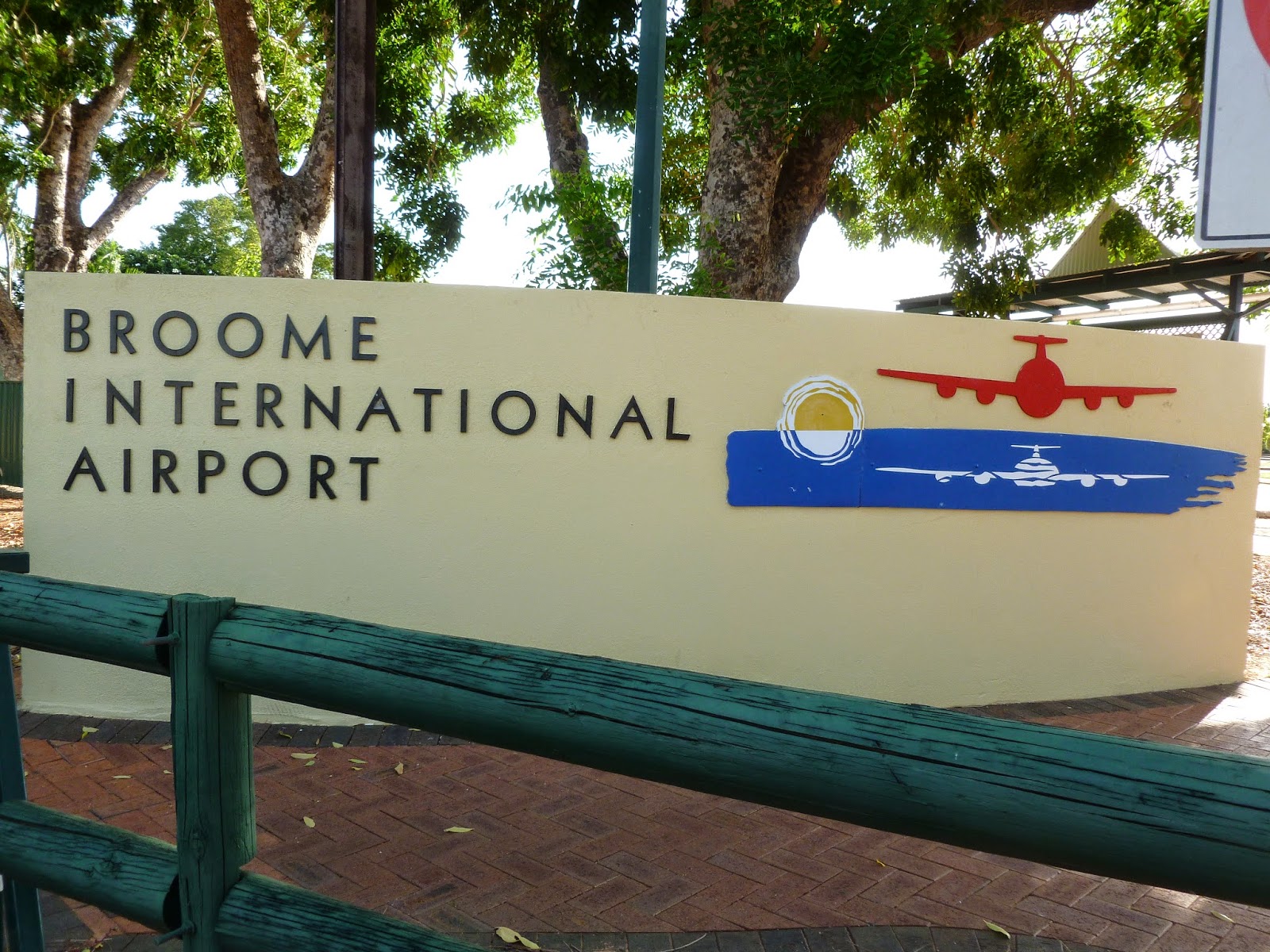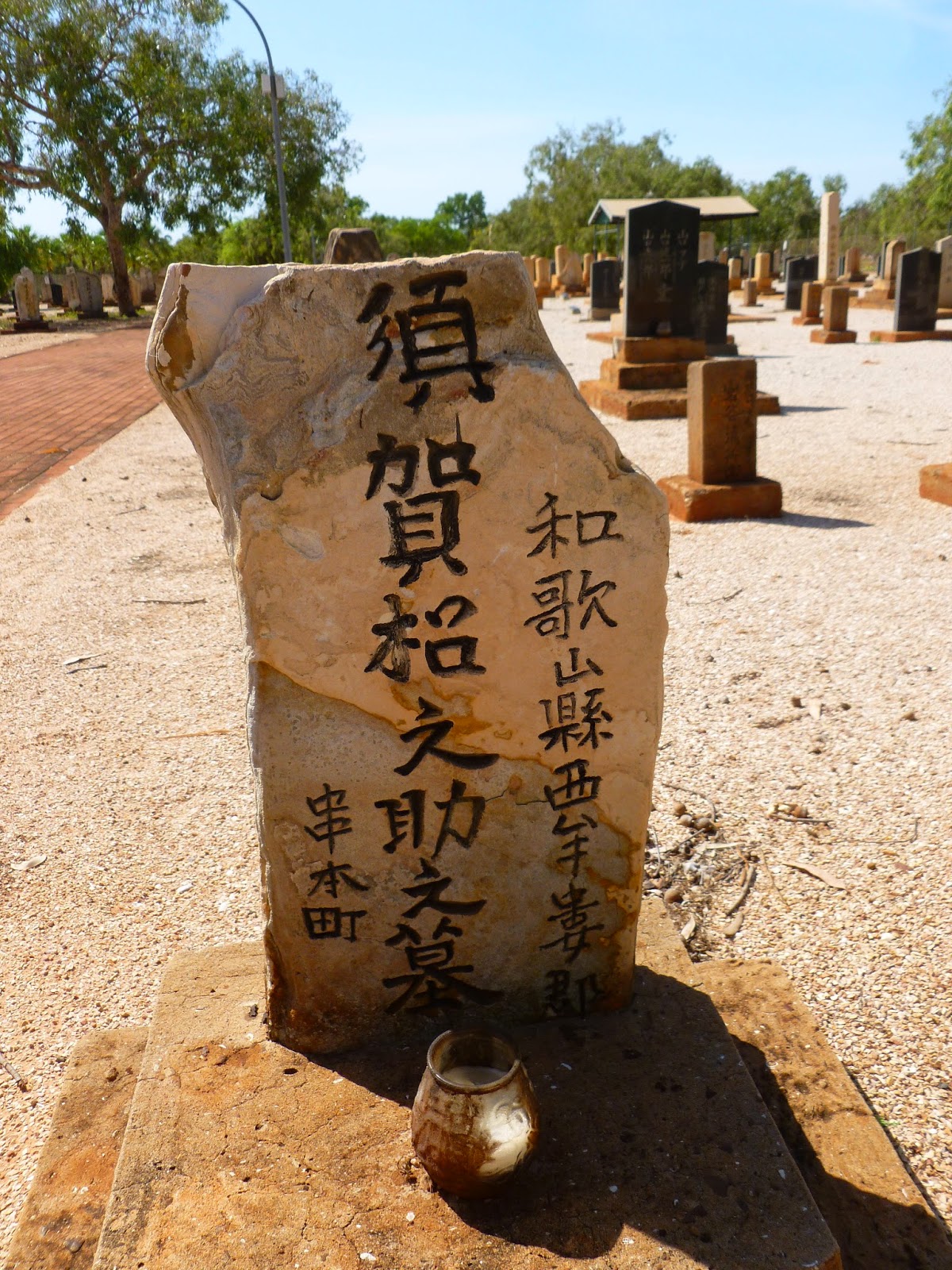 |
| Climbing down to rock pool in Karijini
National Park. |
“All right travellers, how are you?” This was the standard greeting of the energetic tour guide, driver, cook and general trouble shooter, who brought to my mind Johnny Depp’s character Captain Jack Sparrow.
 |
| 4x4 tour bus. |
I wanted to visit Broome, a Western Australian town with a unique history. How would I cover the distance of more than 2200 kilometers from the state capital of Perth? Should I fly in and out? Take a bus? I wasn't about to drive on my own. The best option seemed to be a tour which would allow me to see some of the sights along the way and even some off the main road.
 Watching all the 20 somethings board the bus the last Monday
of March I wondered what I had gotten myself into. There were a few people apparently
in their 30s and early 40s but I was by far the oldest group member. We were 6 men and 15 women of varied occupations from England, Ireland, Germany, Switzerland and Canada.
Watching all the 20 somethings board the bus the last Monday
of March I wondered what I had gotten myself into. There were a few people apparently
in their 30s and early 40s but I was by far the oldest group member. We were 6 men and 15 women of varied occupations from England, Ireland, Germany, Switzerland and Canada.
 |
| Up close with the dolphins at Monkey Mia. |
Over the next 10 days we chatted about our homes, families,
travels and career paths. We commiserated about the heat, flies, long periods
of sitting on the bus and some of the toilets we encountered. On the bus we listened
to music or watched videos about Australian culture and history and some of the
areas we were visiting. Some of us read and most of us dozed off occasionally.
 |
| A fly veil was a necessity for much of the trip - here in Kalbarri
National Park. |
 |
| Ashburton
River in flood due to recent heavy rains. |
 |
| This was a shed before a recent cyclone. |
We visited several distinctive ecosystems
that are World Heritage sites. Activities included hiking (usually down into gorges
and back up) and swimming in the sea and in fresh water rock pools. Some people
went snorkelling which I have done before and did not try this time. There was an extra day trip to swim with whale sharks that several of us, me included,
decided it did not fit the budget.
 |
The Pinnacles in Nambung
National Park.
|
 |
| Termite mound. |
We camped 4 nights and stayed in hostels and
cabins. We
worked in teams to prepare meals and clean up. After sunset, Orion, the Southern Cross and other constellations filled the sky. Over Easter weekend the moon was full.
 |
| We saw this cute lizard on a gorge walk. |
 |
| Keeping our water bottles full was vital. |
Our second campsite was in
Karijini National Park, home to several species of poisonous snakes, where our
guide patrolled the camp ground before he let us off the bus. Despite the
shrieking from the toilet one night, the small snake curled up there was a non-poisonous
variety and the only one we spotted.
 |
| Preparing lunch. |
 Campers sleeping outdoors in swags on camp cots.
Campers sleeping outdoors in swags on camp cots.
My green tent is to right.
I suppose if I had looked harder I might have found a seniors’ tour – with more comfort at greater expense but not likely so enjoyable.
 We reached Broome & Cable Beach by sunset April 8th.
We reached Broome & Cable Beach by sunset April 8th.































